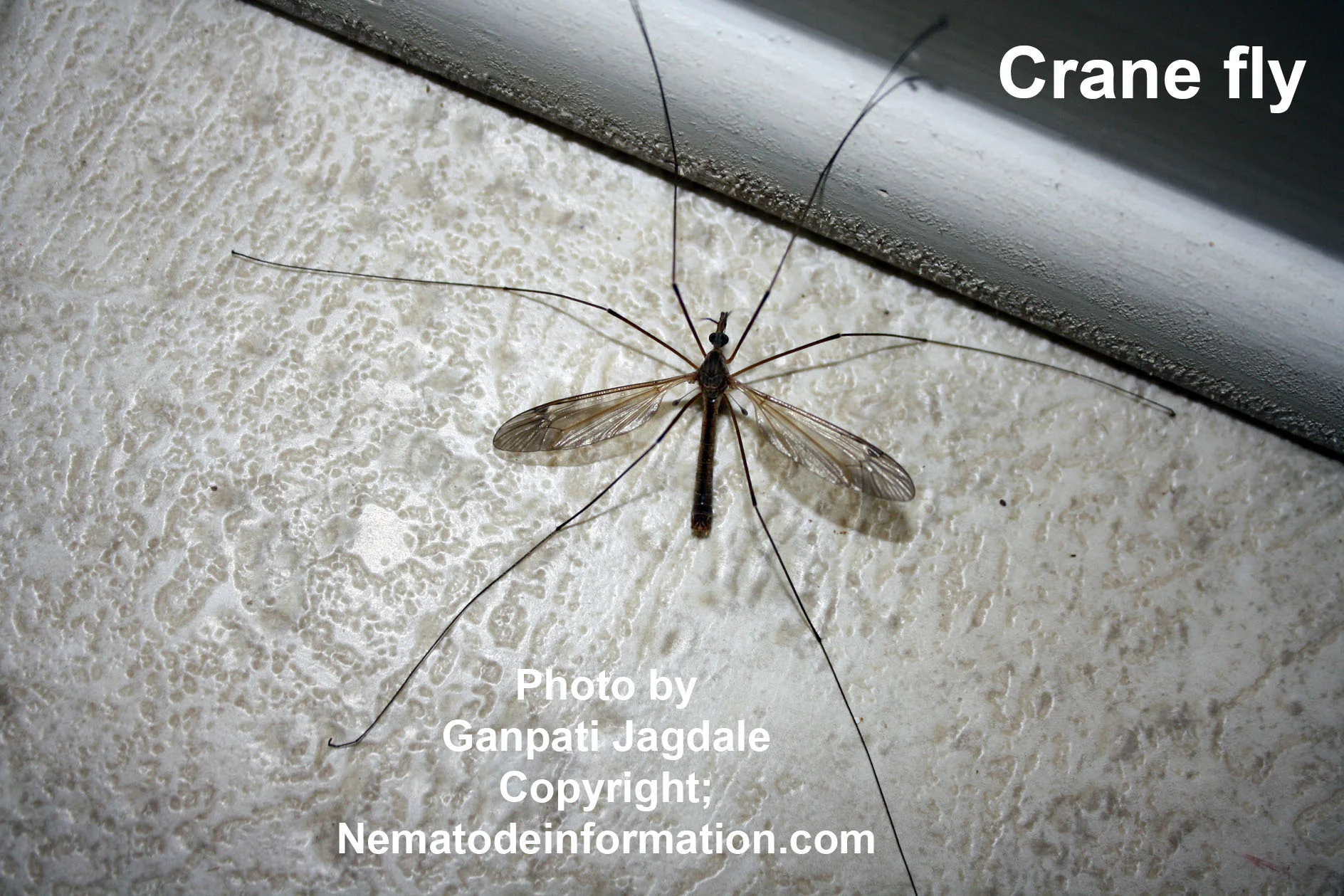Beneficial entomopathogenic nematodes for crane fly Tipula paludosa control- Nematodeinformation
Crane flies Tipula paludosa are one of important pests of turfgrass. Only larval stages (Fig. 1) of this insect cause damage to turfgrass but not the adults (Fig. 2). Crane fly larvae mainly feed on turfgrass roots and crowns but some time they can also feed on the turfgrass foliage. The main symptom of crane fly damage that you will notice is the bare patches of dead turf in your lawn or golf courses.
The chemical insecticides may be effective in controlling crane flies but their use to control crane flies in turfgrass should be avoided due to their detrimental effects on human and animal health, and environment. The use of natural enemies including beneficial entomopathogenic nematodes, entomopathogenic fungi and Bacillus thuringienis subsp. israelensis (strain IPS82) is a safe alternative to chemical pesticides for reducing crane fly damage.
1. Beneficial Entomopathogenic Nematodes
Three beneficial entomopathogenic nematodes including Heterorhabditis bacteriophora, Steinernema carpocapsae and Steinernema feltiae have been found to be effective in controlling over 65% population of crane flies under laboratory or field conditions (Ansari, and Butt, 2012; Oestergaard et al., 2006). For effective control of crane flies, beneficial entomopathogenic nematodes are generally applied at the rate of 1 billion nematodes per acre using traditional sprayers. Entomopathogenic nematodes are commercially available and not harmful to people and animals and other beneficial insects like honeybees.
2. Bacillus thuringienis subsp. israelensis
This is a bacterium also known as Bti and it has been currently used as a biological control of many insect pests. Bti is also very effective against of crane flies causing over 80% mortality of young larvae (Oestergaard et al., 2006).
3. Entomopathogenic fungi, Metarhizium robertsii
Entomopathogenic fungi scientifically called as Metarhizium robertsii has showed a very high efficacy against crane fly larvae. According to Ansari, and Butt (2012), this fungus can cause 100% mortality of crane fly larvae 4 weeks after treatment. This suggests that the entomopathogenic fungi have a potential to use as biological control agent against crane flies.
Literature: Read following literature for an interaction between various beneficial biological control agents and crane flies
Ansari, M.A., and Butt, T.M. 2012. Evaluation of entomopathogenic fungi and a nematode against the soil-dwelling stages of the crane fly Tipula paludosa. Pest Management Science 68: 1337-1344.
Simard, L., Belair, G., Gosselin, M.E. and Dionne, J. 2006. Virulence of entomopathogenic nematodes (Rhabditida: Steinernematidae, Heterorhabditidae) against Tipula paludosa (Diptera: Tipulidae), a turfgrass pest on golf courses. Biocontrol Science and Technology 16: 789-801.

